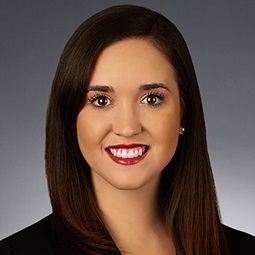On February 9, 2022, the Securities and Exchange Commission (SEC) proposed new rules that, if implemented, would have profound effects on the private equity industry and the relationship among the SEC, fund advisers and investors (the SEC Proposal).1 The proposed rules would prohibit private fund advisers from engaging in certain activities, regardless as to whether the activities are disclosed, the fund’s constituent documents permit them or investors previously provided consent. The rules, as currently proposed, could be adopted with retroactive effect and could impact basic fund terms such as tax distributions and after-tax clawbacks. This post will address certain tax-related considerations of the SEC Proposal.
1. Potential Limitation of Tax Distributions to the Fund Adviser
The SEC Proposal would prohibit loans by a fund to its fund adviser (including loans that consist of cash, securities and other fund assets) and other extensions of credit from a private fund client to its adviser. The SEC proposed this rule because it views these arrangements as an inherent conflict of interest – the adviser both benefits from the loan and manages the assets of the lender. Although not entirely free from doubt, the SEC Proposal, if adopted, would likely limit tax distributions and tax advances to a fund adviser, which the SEC appears to consider a loan for purposes of the SEC Proposal. Such amounts are typically paid to a fund adviser where the distribution waterfall requires distributions of cash to investors on a priority basis. As a result of priority investor distributions and back-ended fund adviser carry entitlements, a fund adviser will often recognize a tax liability in respect of carried interest that it has not received. Depending on the applicable facts and circumstances, such a tax liability could precede associated carried interest distributions by one or more years. To protect the fund adviser from “phantom” tax liabilities (i.e., a tax liability incurred without a cash distribution), most fund agreements provide for a tax distribution or advance to the fund adviser to pay such tax liability notwithstanding the investor distribution priority.
A tax distribution is typically treated as an advance against future carried interest distributions and reduces such amounts. While not technically a borrowing for state law purposes, the SEC has asked for comments on whether tax distributions should be excluded from the loan to fund adviser prohibition. We have considered potential arguments against loan treatment for tax distributions under the SEC Proposal. For example, in our experience, tax distributions are (i) standard terms for funds, (ii) included in up-front partnership agreement drafting of a large majority of funds such that the parameters of any such advances are known at the outset of the fund, and (iii) well understood by the investor community. We are confident these arguments will be brought to the attention of the SEC but it remains to be seen whether the SEC can be convinced that tax distributions are an important term for fund advisers that should not be included in any loan restriction that is implemented. Such a prohibition, while detrimental to all fund managers, could be particularly problematic for newer managers who do not have sufficient assets or cash flow from prior funds to satisfy tax liabilities that may arise and in respect of which they otherwise receive no current distributions.
2. After-Tax Clawbacks
Under another element of the SEC Proposal, a fund adviser’s “clawback” obligation with respect to excess performance-based distributions cannot be reduced by taxes owed or paid with respect to such distributions. The proposed rule makes clear that clawback payments cannot be limited by actual, potential or hypothetical taxes applicable to the fund adviser. Current fund agreements commonly include an “after-tax” clawback that is drafted with limitations capping clawback exposure of a fund adviser to the after-tax carried interest distributions received by such fund adviser. The rationale for this post-tax calculation is to ensure the fund adviser returns, pursuant to a clawback, no more than the total performance-based compensation that it received and retained (rather than any amounts paid to a taxing authority).
The calculation of a tax adviser’s clawback is often heavily negotiated between fund advisers and sophisticated investors. The prohibition on after-tax clawbacks in the SEC Proposal could produce unintended consequences as the parties should be expected to take into account the risk/reward of any such clawback when negotiating the terms of investor fund documents.
The SEC has also asked for comments as to whether, in lieu of enacting the proposed clawback provision described above, the SEC should prohibit deal-by-deal waterfall arrangements (i.e., American style waterfalls) and require funds to adopt “whole-fund” waterfalls (i.e., European style waterfalls), which generally delay the payment of performance-based compensation until investors receive a return of all capital contributions. Mandating how a fund waterfall should be structured could have unintended consequences. For example, as noted above, a back-ended carry entitlement for a fund adviser under a European style waterfall generally causes phantom income for a fund adviser and a greater need for tax distributions.
The SEC requests comments to the SEC Proposal by the later of 30 days after publication in the Federal Register or April 11, 2022. Weil will continue to monitor developments in this area and are already considering potential compliance solutions for fund advisers if the SEC Proposals are adopted. Please let us know if you would like to discuss any questions specific to your circumstances and investor arrangements.
- These rules include requiring certain mandatory quarterly reporting, mandatory annual audits and fairness opinions for certain secondary transactions, prohibiting certain private fund adviser activities, and prohibiting or requiring disclosure regarding the “preferential treatment” of specific investors. See Securities and Exchange Commission, Proposed Rules to 17 CFR Part 275 (2022). Available here.↵
















